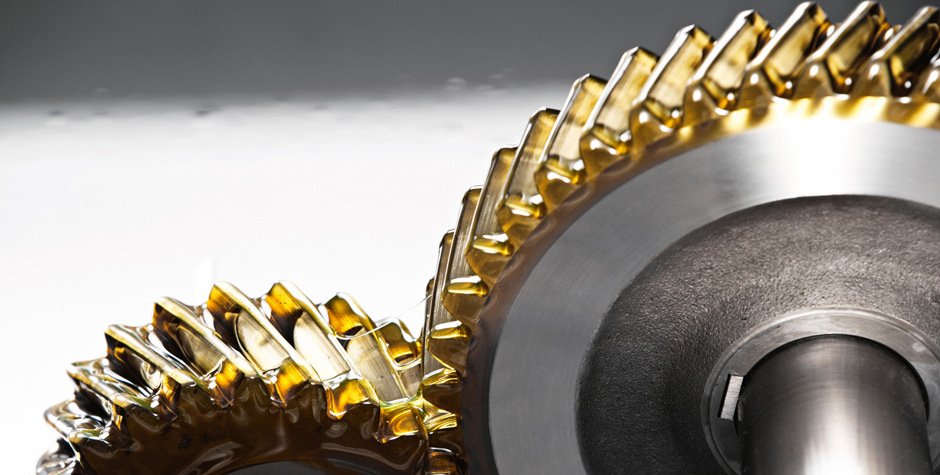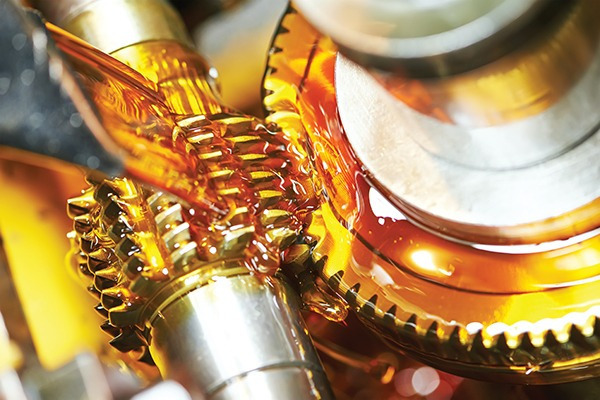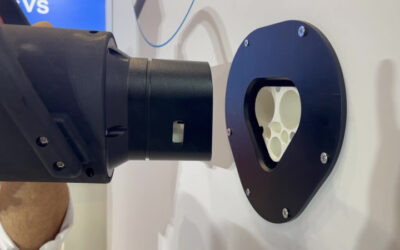Lubricant technology plays a key role in unlocking performance for new electrified drivetrain hardware. Technology is advancing but collaboration with engineers will help maximise the benefit and test any risks.


Oil and electricity can mix
That electric vehicles require oil comes as a surprise to the layman. The performance difference between different lubricant technologies can sometimes astonish mechanical and electrical engineers. And the ability of new lubricant technology to unlock and enable new hardware designs with electrified vehicles is surprising even experienced drivetrain engineers.
A lubricant is a critical component in any drive system that can be designed and optimised for performance just like the solid parts of a transmission are engineered. A lubricant is a painstakingly developed wonder of science. Much of the performance is driven by lubricant additives; chemical packages that when added to the base oil deliver protection to gears, modify friction in shifting devices, increase lubricant life, prevent foaming, prevent rust and corrosion and more.
Only four major providers of lubricant additive packages exist in the world today – companies whose products are part of your everyday life, but most people have never heard of. One such company, with a leading position in transmission lubricants is Afton Chemical. The company has been working in the fuel and lubricant additives marketplace for over 90 years, developing and manufacturing products and solutions to help machines last longer, engines run smoother and fuels burn cleaner and more efficiently. Describing Afton’s response to electrification, Adam Banks, eMobility Marketing Manager at Afton Chemical, states “a strong R&D effort and focus is being applied to new challenges presented by hybrid and electric vehicles”.
New hardware, new challenges
In a traditional transmission, the lubricant is the one component that touches the entire system.
Electrification of the drivetrain is bringing new demands to the transmission lubricant. Existing properties remain essential, such as gear protection and corrosion prevention. But it’s the new properties that will shape the formulating style for electric transmission fluids (ETF) in electric and hybrid vehicles.
- Electrical Properties
Electrical properties become important when directly cooling eMotors. The lubricant needs to act as an insulator, while not allowing static charge to build. It also needs to be compatible with coatings and not attack conduction metals to prevent electrified parts becoming damaged. Electrical properties must be considered too for user safety, reliable operation and efficiency of the transmission. Jackie Zhou, eMobility Technical specialist for Afton Chemical comments “These properties need to be maintained over the service life of the fluid. This requires good oxidative stability and the prevention of contamination from wear metals or ingress through the seals.”
- Cooling Ability


An important new role of the lubricant will be to take heat away from the eMotor in the most effective and efficient way. This requires high heat capacity and thermal conductivity. Using the lubricant to cool the eMotor directly leads to much higher maximum lubricant temperatures. The fluid needs to be able to withstand these temperatures, requiring greater oxidation stability. And all this in a demanding high-speed environment.
- Compatibility
Electrified drivetrains unsurprisingly contain a greater number of electrical parts and electronic control elements than conventional transmissions. The metals used in these components, such as copper, tin and silver, can be vulnerable to corrosion. “The chemistry used to protect gears and bearings can cause problems for these metals, requiring a careful and balanced approach to additive formulating” notes Zhou.
Live and Direct
Demand for new fluid types is being generated by the emerging hardware designs. In pure electric drives, several components may be lubricated by a common sump in one system.
Lubrication in a simple eAxle will only be for the gears and bearings. The requirements of a fluid for this hardware is relatively straightforward, though protection and efficiency will be greatly valued. The high torque generated by eMotors at low speeds will place additional stresses on these mechanical parts.
Direct cooling of the eMotor with an oil-based lubricant is desirable for many auto makers. This can enable the vehicle to maintain peak torque for longer, reduce risks of overheating and increase efficiency. Efficiency in eMotors is hugely important to OEMs as it allows greater power or range from an equivalent battery. Academic studies point to 2-3 speed transmissions being most effective for eDrives. Shifting may require some type of friction element such as clutches or synchronizers.
eMotors produce high torque at low speed. This is exciting for vehicle performance, but can leave engineers with problems of control and durability. A friction element to control the output torque is an option. In either of these cases, frictional properties of the lubricant are essential.
When a friction element and eMotor cooling is combined, the technical challenge for the lubricant becomes substantial, requiring an advanced electric transmission fluid (ETF). Hybrid transmissions will require some of the properties needed for BEVs, whilst also enabling flawless operation of the traditional transmission parts. Banks sees synergies; “Learnings from ETF development is helping lubricant marketers better evolve fluids for hybrid transmissions too.”
A world-first


In Q3 of 2020, the world’s first lubricant additive developed specifically for eAxles equipped with both direct eMotor cooling and a multi-speed system will be launched. “Afton Chemical has developed this product to meet the expected interest in these technologies as they spread from high-end niche vehicles into mass-market EVs” states Banks.
Mature specifications have not yet been widely published for such a product, as each manufacturer is developing in parallel and in isolation. Industry bodies have not traditionally defined specifications for transmission applications, though some efforts are underway for eAxles. Typical data required is a combination of existing industry tests and new tests that look at new challenges the lubricants face.
Three types of test illustrate new approaches to understanding performance.
- Extended copper testing, measuring copper in oil
The criticality of conductive metals in electrical systems requires a longer and more demanding corrosion test. An industry standard ASTM D130 tested at 121OC for 3 hours is not sufficiently discriminating. Greatly extending the duration to 384 hours (16 days) and elevating the temperature to 150OC is recommended. The post-test analysis should rate the strip, but crucially look at copper in the oil. “In benchmarking it is observed that some fluids will return a fantastic looking strip, but they do so by stripping away the copper. This leeching process would be disastrous for copper wire or contacts, with a stable barrier of mild corrosion preferred” comments Zhou.
- Vapour phase
A different mechanism of corrosion is via the vapour phase. Experiments show that some lubricants can corrode copper wire more quickly above the surface of the oil than where it is immersed. Volatile species, especially free sulfur compounds can attack winding, sensors, controls and connections. New testing to assess vapour phase corrosion has been developed and Zhou sees this as a useful tool, “Vapour phase testing complements well the extended D130 testing to evaluate corrosion in from different mechanisms.”
- Electrical properties after ageing
Measuring electrical properties of fluids is crucial for function and safety. But it is clear that oxidation products, wear metals, water ingress and other contaminants could all increase the conductivity over time. “Benchmarking shows that different lubricant additive technology varies greatly in its ability to control this effect. Even well-recognised fluids can show poor electrical results after ageing.” confirms Zhou.
Partners prosper
“Afton Chemical believes in an open, flexible and collaborative way of working with our customers to understand their business needs and help them achieve their goals. This unique partnering style allows long-term relationships to develop and greatly aids delivery of leading-edge technology” says Banks when discussing how companies can better make progress.
“With development timelines for electrified drivetrains shorter-than-ever, it is even more critical to bring engineers and chemists together to enable new hardware and reduce risks for pioneering OEMs.”
It is clear that new performance requirements need new technology to be developed in tandem with hardware. New testing methods, relevant to the application in development, are also needed to control risk. Expertise in formulating technology solutions and creating relevant testing along with a collaborative working style will be required for lubricant developers and OEMs to lead in evolving lubrication.
Adam Banks, eMobility Market Manager at Afton Chemical

















